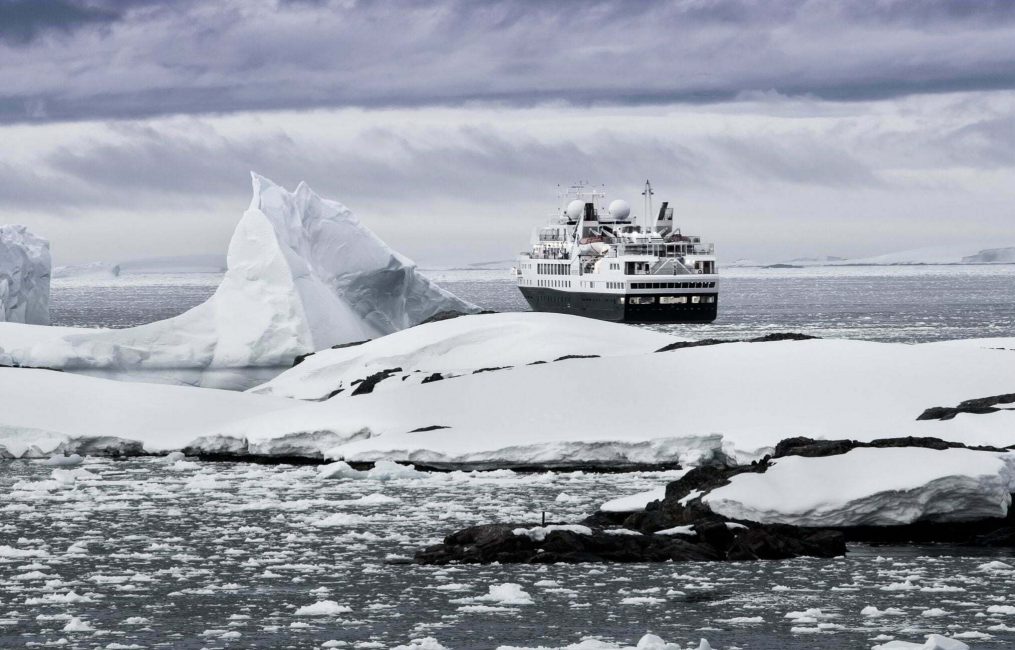Acoustic PollutionArchived
Acoustic pollution in marine environments is a growing environmental concern due to its potential to affect cetaceans and other species by altering naturally occurring underwater soundscapes.
What’s happening?
Acoustic Pollution
Human-induced noises underwater, such as sonar testing, have been implicated as the likely cause of numerous whale strandings around the world.
Environmental organizations have even sued the U.S. military to block some kinds of testing in areas with large populations of marine mammals. Although military activity is prohibited in Antarctica, there is concern that research and other activities in the Southern Ocean could have negative impacts on marine organisms. Recent research has revealed that a significant number of stranded whales had hearing loss.

In the Southern Ocean
Acoustic Pollution
Compared to other areas, the Southern Ocean experiences limited amounts of research activities (such as seismic surveys) that generate large amounts of noise. However, there are some activities with the potential to have a high impact on cetaceans.
One example is the transmission of up to 205 decibels (louder than a jet engine and well above the level that can cause hearing damage in humans) of sound off Heard Island as part of the Acoustic Thermometry of Ocean Climate (ATOC) experiment. This is well above the levels that have been associated with whale strandings elsewhere.

ACOUSTIC POLLUTION
Why it’s important
The Southern Ocean is a globally important feeding area for whales. Any human activities that generate underwater noise must be conducted with the protection of cetaceans, and other species that may be impacted by increased underwater noise levels, in mind.
ACOUSTIC POLLUTION
What ASOC is doing
In 2007, ASOC made the following recommendations to the Antarctic Treaty Parties.

Assess
There should be a requirement to assess potentially significant marine acoustic impacts in any IEE and CEE relating to marine activities.

Guidelines
Appropriate seismic guidelines to mitigate harm should be required for all vessels in the Antarctic that are conducting active seismic research.

Reports
Reports on utilization of assessment measures and guidelines should be reported back to the CEP.

Research
The CEP and SCAR should establish a small working group of people with relevant expertise on acoustic impacts from various countries and disciplines, to share information, advance sound impact research, and develop appropriate tools for mitigating harm from intense sound emissions in the Antarctic.

PROTECTING ANTARCTICA
Thank you
ASOC has represented the global conservation community at the highest levels of Antarctic governance for over 40 years. We couldn’t do it without the support of our wonderful members, partners and a global network of Antarctic advocates,
Join us today as we continue to work towards the strongest possible protection for Antarctica and its wildlife.
Acoustic Pollution
ADDITIONAL RESOURCES
Dive into the archives and read more about the campaign to limit noise pollution in the Southern Ocean with the downloadable resources below.
 ASOC
ASOC

